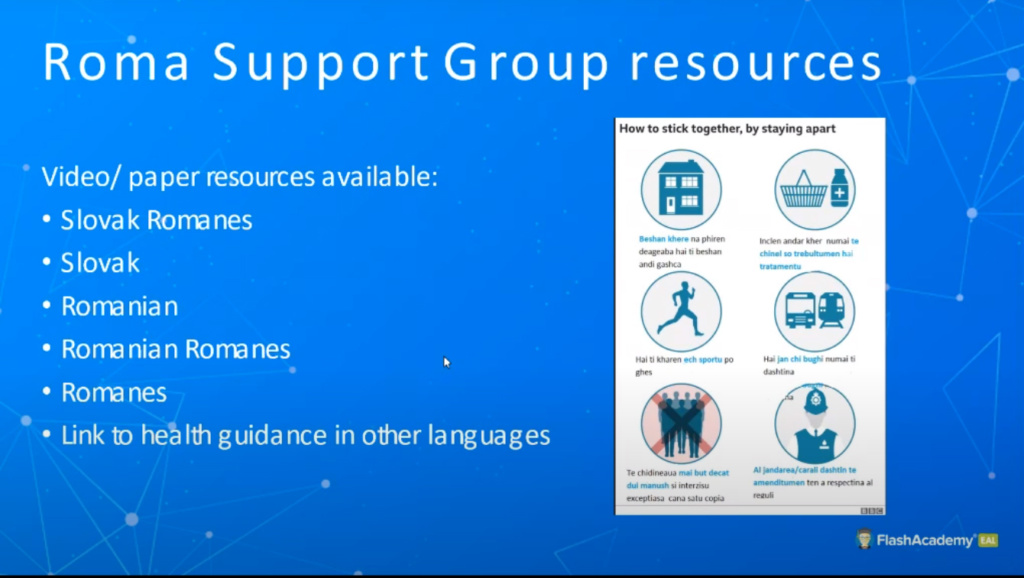
Industry news
The pandemic has impacted every aspect of society, from school closures to hospitality and event cancellations. For the team at FlashAcademy, the UK’s leading digital language learning platform for English as an Additional Language (EAL), this meant the cancellation of two major EAL events in both Birmingham and London.
As an alternative to these paid events, FlashAcademy have started to put on free CPD webinars for educators supporting learners with EAL.
Thousands of teachers, teaching assistants and support staff tuned in to learn about supporting the health and wellbeing of EAL pupils, managing provision in high-need schools, language awareness, doubling attainment for EAL learners and so much more!
As an exclusive for Digital Learning Club subscribers, we have cherry picked some of the key topics discussed across the webinars, hosted by both the FlashAcademy team and EAL Directors at primary and secondary schools.
Supporting New Arrivals
Language is at the heart of the school, so for pupils arriving who don’t speak the language of the school, it is crucial that they’re made to feel welcome as soon as possible. Many new arrivals, especially those with lower levels of English proficiency, will feel as though they don’t belong, so it’s important we help them to feel reassured and comfortable.
Developing an EAL vision, shared within the department and across the school, is a great way to emphasise the message. Use key words like ‘Welcome’, ‘Celebrate’ and ‘Encourage’ as a foundation for your ethos and display these visually around the school.
Whole School Approaches
When considering the inclusion of learners with EAL, we shouldn’t limit this to inside the classroom but across the school campus. Visuals are key for language and learning development, so it’s worth asking teachers from every department to make at least one EAL-friendly display to help them engage with the subject lesson.
Putting an EAL stamp on other incentives is a great way to help integrate learners within the school community. To help learners acquire curriculum vocabulary, reach out to departments and ask for a list of key subject vocabulary to not only ease your workload as the EAL leader/coordinator but to help the learner prepare for mainstream lessons.
Health & wellbeing
Health has, and continues to be, at the forefront of all our minds as the pandemic occupies a huge space in the public consciousness. Language barriers can make it difficult to support pupils’ physical and mental health.
Supporting EAL pupils’ ability to express themselves in their home language as well as English is vital, as the ability to identify and express your emotions is linked to better health outcomes and greater academic success.

Differing cultural perceptions can have an impact on how we communicate about physical and mental health. In many cultures, mental and physical health are viewed much more holistically than in the west, where they are often separated. Physical complaints may actually be an expression of mental distress, so try to be aware of this in order to direct people to appropriate services.
Language Learning Myths
The language learning myths we hear in the world around us affect our attitude towards language learning. Here are just a few of the myths we unravelled:
If a child isn’t speaking, their English level is very low – Most EAL pupils go through a ‘silent phase’ when they first arrive as they absorb language through receptive skills of listening and reading. It will take time for them to produce language confidently or spontaneously, but their understanding may be higher than it seems. Help develop their confidence and provide structured tasks at their level.
It is the English teachers’ job to teach English – It is every teacher’s responsibility to support language development for all pupils. Awareness of learners’ language needs helps remove barriers to learning and create a more inclusive classroom
Making children speak more than one language will confuse them – Research shows that bilingualism has long-term advantages including increased cognitive control and improved problem-solving abilities. Parents often believe this language learning myth and feel they should speak to their children in English all the time. In fact, it is better for parents to speak their home language as they are likely to be more confident and will give children richer language input.
Teacher Talk
The mainstream classroom can be an overwhelming place where pupils are bombarded with unfamiliar language. However, there are ways that you can adjust your teacher talk to help support EAL pupils’ understanding, whichever subject you teach. Ensure your language is direct, and not too polite (e.g. ‘Would you mind doing me a favour?’), avoid self-narration, support your language with gesture, and model correct grammar in your teacher talk – there is a strong link between oracy and literacy, so there is the risk that pupils will imitate ‘slang’ in their academic work!
Keen to learn more about accelerating progress for learners with EAL? Click here to book your free trial with the FlashAcademy platform.
Register for free
No Credit Card required
- Register for free
- Free TeachingTimes Report every month